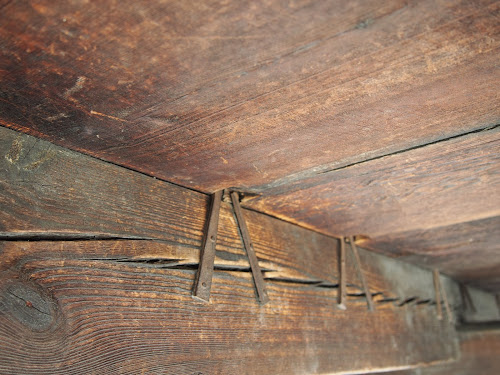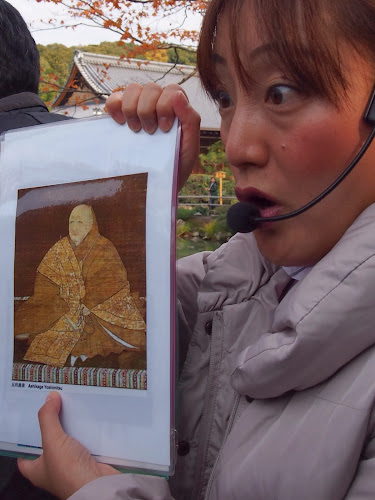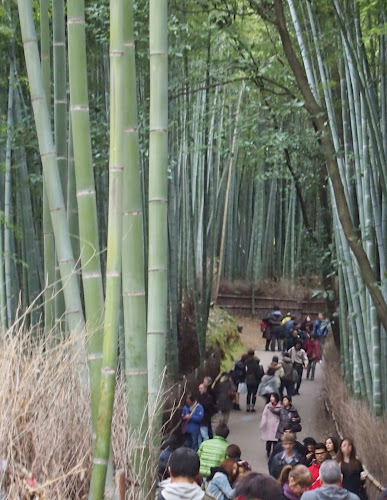Although a very large and bustling modern city, Kyoto and its environs are filled with very significant (and fascinating) historical and cultural sites, most of which seem to be World Heritage Sites. Our first day in Kyoto with our guide from Osaka was a full one.
Among many interesting features were the so-called “nightingale” floors (tweet, tweet) around the wooden castle’s perimeter. They were designed with metal nails underneath to squeak as a warning of Ninja attack.
We next headed to Kinkaku-ji, a temple in a Golden Pavillion.
Built at the end of the 14th century, the Golden Pavillion has gold leaf over lacquer covering the exterior of the top two floors. Each floor represents a different style, with the first level in the style of the 11th century imperial aristocracy (more traditional, if you will), the second in the style of the warrior aristocracy and the top level in a Chinese style.
Ashikaga Yoshimitsu was a shogun during the Marumachi era (early 14th to late 16th centuries) and created the buildings and garden to represent “the Pure Land of Buddha in this world.” Among other things, the Shogun used the Pavillion as a guest house for the Emperor. According to his wishes, his son converted it into a temple on his death.
Medieval Jizo statues are a protection for travelers, children and the weak.
Sekka tei teahouse, sitting well above the Pavillion, is another embodiment of wabi sabi.
Close by the teahouse is Fudo-do temple where the main image for worship is Fudo myoo, a deity who transmits the teachings of the Buddha, battles evil, and helps the recently deceased become buddhas.
We jumped back in our van and headed for Ryoan-ji, a mid15th century temple with a famous rock garden. With our mid-November through early December visit timed perfectly to the peak of the fall foliage season in Kyoto, we became more and more amazed at the wild range of color afforded by the leaves. It was quite stunning.
The arrangement of 15 rocks is such that all 15 can never be seen from one vantage point. After contemplating them for a while, we came to appreciate why the garden is so highly regarded as a place of meditation and why Queen Elizabeth was reportedly so taken with it when she visited some long time ago.
Persimmon trees are everywhere in the region and were ready to be picked. It’s a very popular fruit. One variety is eaten fresh and another is strung up to dry with a cord to sweeten more. Kyle and Ai had a strand of persimmons hanging on the balcony back at the apartment.



















